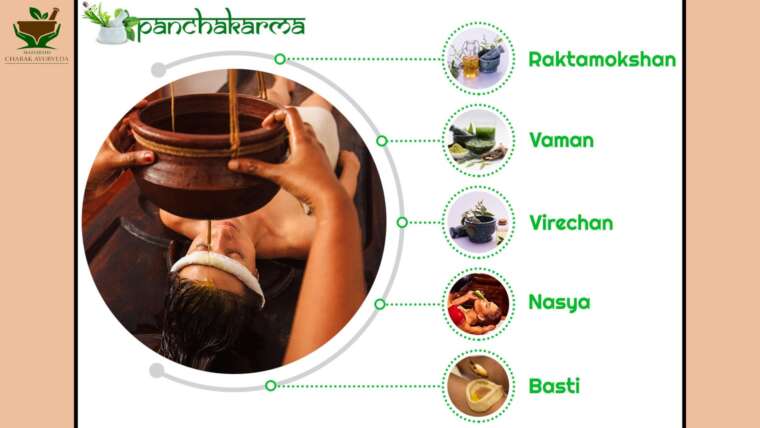Ayurveda, the ancient system of natural healing, extends its wisdom to the realm of child health, recognizing that each child is a unique manifestation of energies. In fostering optimal growth and development, Ayurveda provides a holistic approach that considers not only physical well-being but also mental and emotional harmony. This comprehensive guide explores how Ayurveda tailors its principles to support the growth and development of children, offering insights into nutrition, daily routines, and herbal remedies.
Understanding Children’s Constitution (Prakriti) in Ayurveda
Ayurveda identifies three primary doshas—Vata, Pitta, and Kapha—that influence an individual’s constitution or Prakriti. Just as adults have distinct doshic profiles, children also exhibit varying combinations of these doshas. Understanding a child’s Prakriti is crucial for tailoring Ayurvedic recommendations to promote balance and overall well-being.
Balanced Nutrition for Growing Bodies
Ayurveda emphasizes the significance of a balanced and nourishing diet for children, recognizing that proper nutrition lays the foundation for healthy growth and development.
- Vata-Pacifying Foods:
- Examples: Warm, grounding foods like rice, cooked vegetables, and soups.
- Purpose: To soothe Vata’s airy and mobile qualities, promoting stability and nourishment.
- Pitta-Pacifying Foods:
- Examples: Cooling foods like sweet fruits, cucumber, and dairy.
- Purpose: To balance Pitta’s heat, supporting a calm and regulated digestion.
- Kapha-Pacifying Foods:
- Examples: Light and invigorating foods like whole grains, legumes, and bitter greens.
- Purpose: To counteract Kapha’s heaviness, encouraging lightness and vitality.
Ayurvedic Daily Routines for Children
Establishing consistent daily routines aligns with Ayurvedic principles, providing a sense of stability and grounding for children.
- Wake-up Routine:
- Early Rise: Encourage waking up early, preferably during the Kapha time of day (before 6 a.m.).
- Oral Hygiene: Emphasize oral care practices like tongue scraping and oil pulling.
- Bathing:
- Warm Baths: Opt for warm baths to balance Vata and provide a calming effect.
- Oil Massage (Abhyanga):
- Benefits: Regular oil massages with gentle oils nourish the skin, promote circulation, and contribute to overall well-being.
- Meal Times:
- Structured Meals: Serve meals at regular intervals, fostering healthy digestion.
- Mindful Eating: Encourage mindful eating practices, emphasizing the importance of savoring and appreciating each bite.
- Play and Exercise:
- Balanced Activity: Facilitate a balance between active play and rest to support energy and vitality.
- Nature Connection: Encourage outdoor activities to foster a connection with nature.
- Sleep Routine:
- Consistent Bedtime: Establish a consistent bedtime to ensure adequate and restful sleep.
Herbs and Natural Remedies for Children
Ayurveda harnesses the power of herbs to address common childhood concerns while minimizing potential side effects.
- Tulsi (Holy Basil):
- Benefits: Boosts immunity and supports respiratory health.
- Administration: As a herbal tea or in a diluted form.
- Triphala:
- Benefits: Aids digestion, supports regular bowel movements.
- Administration: In powdered form, mixed with honey or warm water.
- Brahmi:
- Benefits: Enhances cognitive function and supports mental clarity.
- Administration: In powdered form or as part of a herbal formulation.
- Ginger and Honey:
- Benefits: Eases digestive discomfort and boosts immunity.
- Administration: Mixed in warm water or as a part of herbal concoctions.
Ayurvedic Practices for Common Childhood Issues
Ayurveda provides gentle and effective solutions for addressing various childhood concerns:
- Digestive Issues:
- Remedies: Incorporate digestive spices like cumin and fennel in meals. Triphala can aid digestion.
- Respiratory Health:
- Remedies: Steam inhalation with eucalyptus oil. Tulsi tea for respiratory support.
- Sleep Disturbances:
- Remedies: Calming activities before bedtime, such as storytelling or gentle massage.
- Immunity Boosting:
- Remedies: Nutrient-rich foods, herbal teas, and immune-supportive herbs like Ashwagandha.
Ayurvedic Approaches to Education and Learning
Ayurveda recognizes the importance of a balanced approach to education that considers a child’s unique learning style and temperament.
- Vata Children:
- Approach: Gentle guidance and structured learning environments.
- Activities: Artistic pursuits and creative expression.
- Pitta Children:
- Approach: Encourage curiosity and provide challenges.
- Activities: Problem-solving exercises and teamwork.
- Kapha Children:
- Approach: Provide stimulation and variation in learning.
- Activities: Engage in physical activities and interactive learning experiences.
Parental Guidance and Ayurvedic Consultations
While Ayurveda offers valuable insights for promoting children’s well-being, individualized guidance is crucial. Ayurvedic consultations with qualified practitioners allow for personalized recommendations tailored to a child’s unique constitution, addressing specific health concerns, and supporting optimal growth and development.
Consult
Conclusion
Ayurveda’s approach to children’s health transcends conventional practices, offering a holistic framework that considers the interconnectedness of body, mind, and spirit. By embracing Ayurvedic principles in nutrition, daily routines, and herbal remedies, parents can cultivate an environment that nurtures their children’s growth, development, and overall well-being. Ayurveda invites a conscious and natural approach to parenting, fostering a harmonious balance that sets the foundation for a lifetime of health and vitality.





